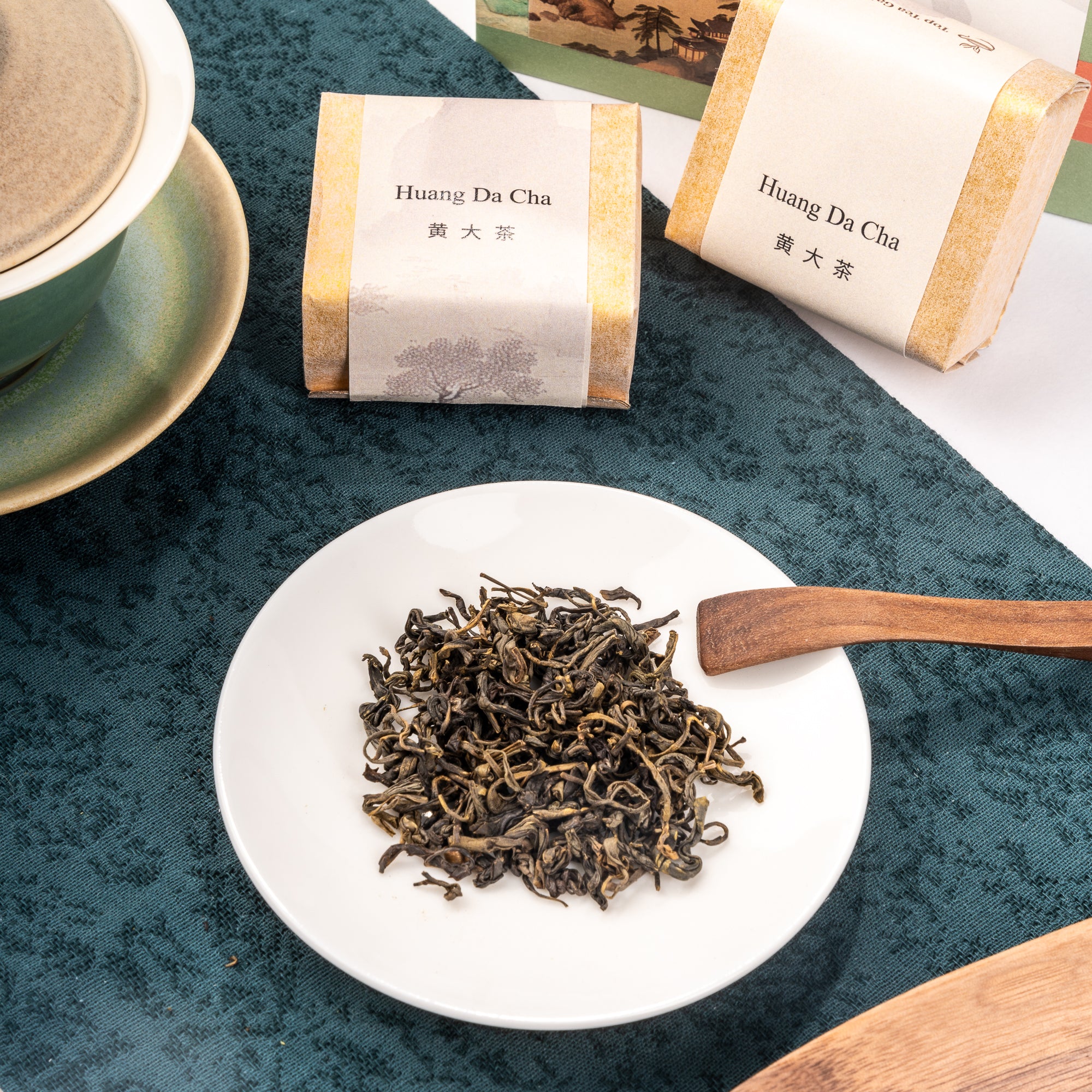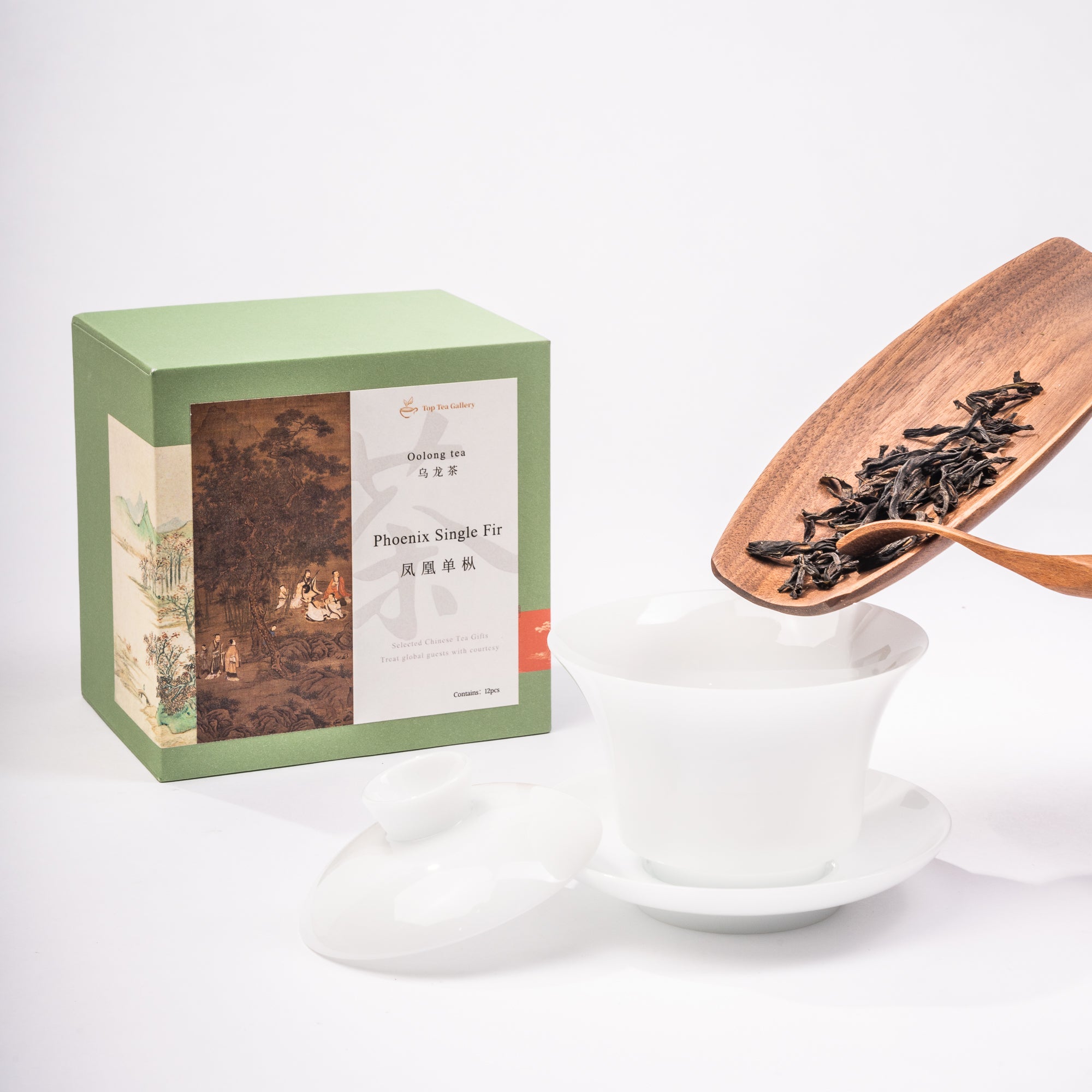








Huang Da Cha (黄大茶)
50 grams per box
Yellow Tea
Yellow tea is a unique type of Chinese tea known for its distinct production process and flavor profile, which sets it apart from green tea, black tea, and other types of tea.
Characteristics and Production Process of Yellow Tea
-
Micro-Fermentation Process:
- Unlike green tea, yellow tea undergoes a slight fermentation process. During production, the tea leaves are subjected to steps such as fixation, cooling, "enclosure" (where tea leaves undergo slight fermentation), and drying to preserve the natural floral aroma and sweetness of the tea.
-
Yellow Buds (Huanghao):
- Yellow tea leaves often feature prominent yellow buds, a notable characteristic that distinguishes it from other teas. These buds not only enhance the visual appeal but also contain abundant natural nutrients.
-
Taste and Aroma:
- Yellow tea typically produces a golden-yellow liquor that is clear and bright, accompanied by a unique malt aroma and a subtle sweetness. Compared to the crispness of green tea and the robustness of black tea, yellow tea offers a milder and smoother taste, appealing to those who prefer a delicate flavor profile.
Differences from Other Types of Tea
-
Difference from Green Tea:
- Green tea undergoes no fermentation process; the leaves are immediately fixed after harvesting to retain their green color and fresh flavor. In contrast, yellow tea undergoes micro-fermentation, imparting more complex flavors and aromas.
-
Difference from Black Tea:
- Black tea is fully fermented, resulting in a strong fruity aroma and full-bodied flavor. Yellow tea, with its lighter fermentation process, preserves the natural sweetness and gentle aroma of the tea leaves.
-
Difference from White Tea:
- White tea is minimally processed and not fermented, allowing the tea leaves to retain their natural state and original flavor. In contrast, yellow tea undergoes micro-fermentation, contributing to a more nuanced and deep flavor profile.
******
This tea box contains 12pcs with 4-6grams per pc, total 50 grams.
Huang Da Cha (黄大茶) is a rare and precious Chinese tea known for its unique production process and flavor profile, making it stand out in the world of tea.
Characteristics and Production Process of Huang Da Cha
-
Rare Variety:
- Huang Da Cha is renowned for its rare tea tree variety, mainly grown in the high mountain regions of Guizhou and Hunan provinces, China. These tea trees grow slowly, with large leaves, each displaying a distinct shape and color.
-
Production Process:
- The production of Huang Da Cha involves meticulous steps such as plucking, fixation, rolling, and roasting. The process emphasizes manual techniques and precise timing to ensure the tea's high quality and unique flavor.
-
Taste and Aroma:
- When brewed, Huang Da Cha yields a bright orange-yellow liquor that is clear and luminous, exuding unique fruity and floral aromas. The taste is smooth and mellow, with a subtle sweetness and a lingering aftertaste. These distinct characteristics make Huang Da Cha a prized possession among tea enthusiasts.
Suitable For
Huang Da Cha is ideal for tea enthusiasts seeking rare varieties and unique flavors. Whether you are a beginner exploring new tea experiences or an expert with deep knowledge of tea culture, Huang Da Cha promises unexpected surprises and satisfaction. Whether as a special gift or for daily enjoyment, Huang Da Cha showcases its unique charm and value.
Don't forget to select a teapot and tea pet to spend the best tea time with you!
Choose options









High Quality small package Tea to create a light leisure tea life
Need help?
Frequently Asked Questions
Referencing our "Make the Perfect Cup of Tea" instructions, take 1 Tou Cha (remove the paper wrapping), place it into a pre-heated teapot or cup, add 16 oz boiling water, and steep 5 + minutes. Respectfully, drink plain.
Pu-Erh tea is most commonly formed into bricks or cakes and traditionally used as a form of currency.
Pu-Erh is a black tea and is therefore high in caffeine, compared to green or oolong tea.
You may also like
Community Favorites




















